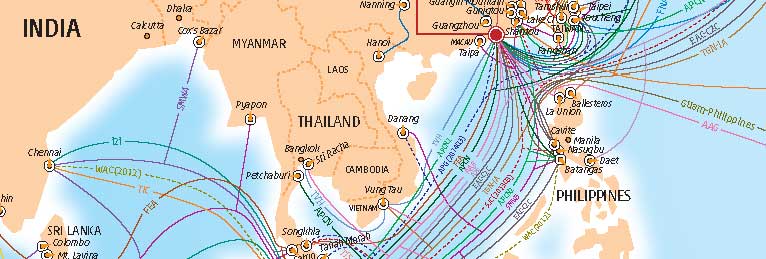Prices in the marketplace are dropping as more carriers offer Ethernet Virtual Private LAN Service (VPLS). But due to limited availability in some regions, VPLS can still be an expensive WAN option to implement.
According to a recent report by research firm TeleGeography, Western Europe and the United States saw the largest price drops for VPLS services year over year.
What helped drive down VPLS costs in Europe were two factors: availability and growing competition. Europe was the first region to deploy carrier Ethernet, meaning that VPLS is now “more widely available in Europe than in any other region.” Throughout Europe there is a growing base of incumbent and competitive players offering VPLS service.
London and Frankfurt saw a strong drop in VPLS service prices. A FastE VPLS port in London was $2,918 per month in H2 2012, while the price of the same service in Frankfurt was $1,752 per month, 39 percent less than what enterprise customers had to pay last year. So for corporate networks that include Europe and the USA, prices are exceedingly attractive.
In markets like the key cities of South America, there aren’t as many service options, so VPLS continues to be expensive. The median price for a FastE connection in Sao Paulo was $10,973 in Q2 2012, which is twice what a business customer would pay in New York or Los Angeles, two markets where there are multiple service provider options. Again, the issue with the prices is simply service availability. In New York, VPLS availability was 28 percent versus 6 percent in Sao Paulo.
Besides Latin America, VPLS prices in Asian cities continue to be high. The median price of a FastE VPLS port in Mumbai was $22,111 per month in Q2 2012. Although Mumbai’s VPLS prices dropped 13 percent over 2011, they are still eight times what a customer would pay for the same service in London.
There does appear to be hope with VPLS pricing.
Brianna Boudreau, a TeleGeography analyst, said that as domestic U.S. and international service providers expanded their Ethernet footprints to meet the needs of multinational clients that were moving into areas such as Latin America and India, overall “VPLS service availability increased 9 percent worldwide between 2011 and 2012.”
Boudreau added that as more players “enter the market and the service continues to mature, prices will continue to decline, and regional disparities will narrow.”
VPLS is, of course, not the only service where geography and availability dictate prices. Similar trends have been seen in local access loops and international bandwidth.



